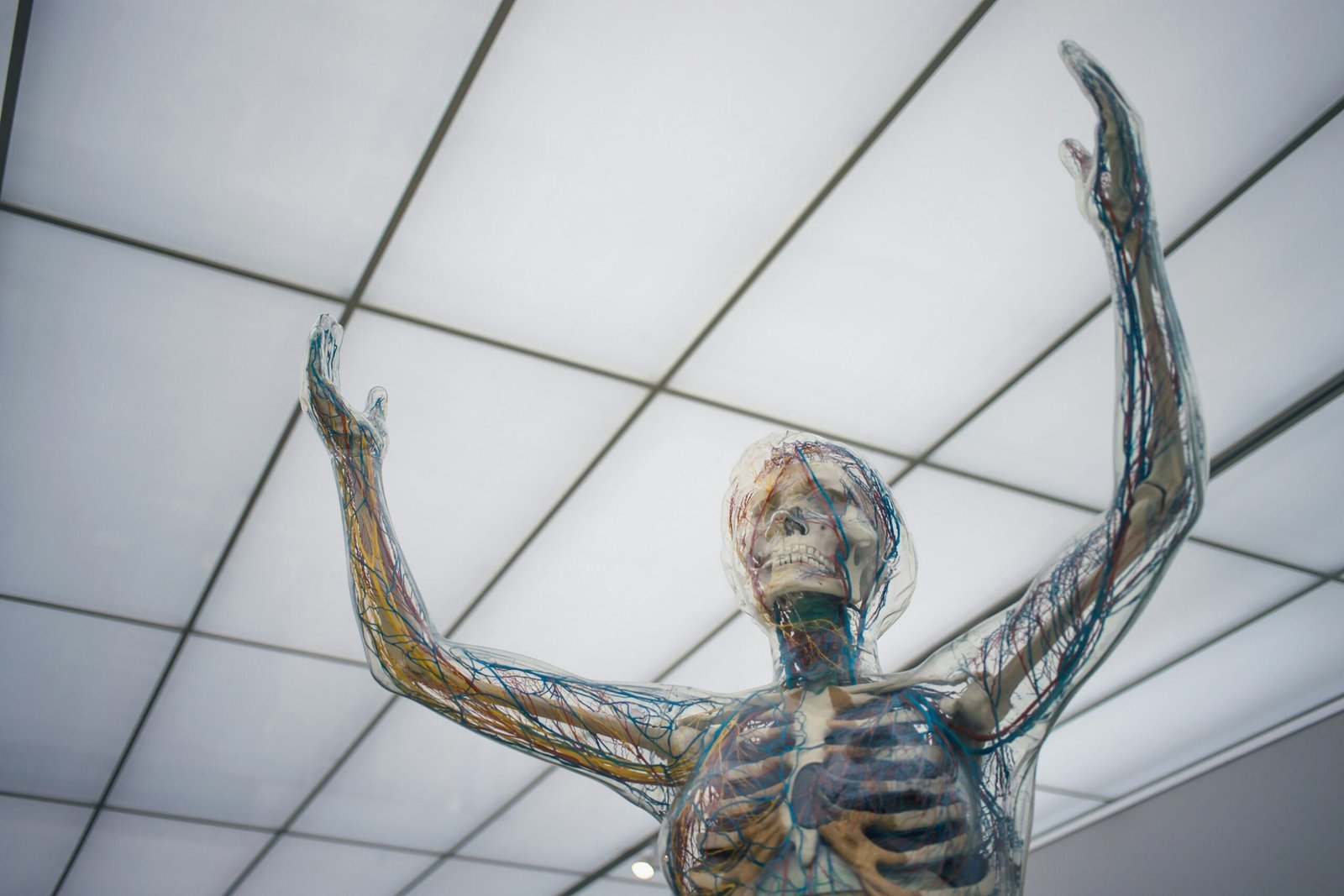Human nerves are an essential component of the nervous system, which enables communication and signal transmission throughout the body. The nervous system consists of the brain, spinal cord, and peripheral nerves, each playing a crucial role in maintaining bodily functions and facilitating cognitive processes.
Brain
The brain is the central hub of the nervous system, responsible for controlling various bodily functions and cognitive processes. It governs voluntary movements and plays a vital role in thinking, memory, and emotions. Additionally, the brain receives and processes sensory information from the body, allowing us to perceive and interpret our surroundings.
Spinal Cord
The spinal cord serves as a pathway for transmitting signals between the brain and the rest of the body. Located within the spinal column, it is protected by the vertebral bones. The spinal cord receives sensory signals from the senses and transmits them to the brain for analysis and processing. It also conveys motor signals from the brain to organs and muscles, enabling voluntary movement and coordination.
Peripheral Nerves
Peripheral nerves are the branches that originate from the spinal cord and extend throughout the body, connecting to organs and tissues. These nerves play a crucial role in transmitting sensory signals from the body to the brain and carrying motor signals from the brain to various organs and muscles.
Sensory Nerves
Sensory nerves are responsible for transmitting sensory signals from the body to the brain. These signals include touch, temperature, pain, vision, hearing, smell, and taste. Sensory nerves allow us to perceive and interpret the world around us, providing vital information for our survival and well-being.
Motor Nerves
Motor nerves transmit motor signals from the brain to the muscles and organs, enabling control over movement and muscular actions. These nerves contribute to voluntary movements, such as walking and writing, as well as essential bodily functions like respiration and digestion. Motor nerves play a crucial role in maintaining coordination and ensuring the proper functioning of our body.
Understanding the function and structure of human nerves is essential for comprehending how the body works and responds to external stimuli. The intricate network of nerves allows for internal communication and coordination among different parts of the body, ensuring the proper functioning of all bodily systems. By studying and understanding nerves, scientists and medical professionals can develop treatments and interventions to address nerve-related conditions and improve overall health and well-being.
أعصاب الإنسان تشكل النظام العصبي الذي يعمل على التواصل ونقل الإشارات في جميع أنحاء الجسم. يتكون النظام العصبي من الدماغ والحبل الشوكي والأعصاب المحيطة.
- الدماغ: يعتبر الدماغ المركز الرئيسي للجهاز العصبي. يتحكم في وظائف الجسم المختلفة والعمليات العقلية مثل التفكير والذاكرة والمشاعر. وهو يسيطر على الحركة الإرادية ويتلقى ويعالج المعلومات الحسية من الجسم.
- الحبل الشوكي: يعمل الحبل الشوكي كمسار لنقل الإشارات بين الدماغ وباقي الجسم. يوجد في العمود الفقري ويحميه وظيفة حماية الجهاز العصبي المركزي. يتلقى الحبل الشوكي إشارات من الحواس وينقلها إلى الدماغ وينقل الإشارات الحركية من الدماغ إلى الأعضاء والعضلات.
- الأعصاب المحيطة: تنشأ الأعصاب المحيطة من الحبل الشوكي وتتصل بالأعضاء والأنسجة في الجسم. تنقل الإشارات الحسية من الحواس إلى الدماغ وتنقل الإشارات الحركية من الدماغ إلى العضلات والأعضاء المختلفة.
تنقسم الأعصاب إلى نوعين رئيسيين:
- الأعصاب الحسية: تحمل الإشارات الحسية من الجسم إلى الدماغ لتحليلها ومعالجتها. تشمل الأعصاب الحسية الأعصاب التي تنقل الإشارات المرتبطة بالمس بالجلد والحرارة والألم والرؤية والسمع والشم والتذوق.
- الأعصاب الحركية: تنقل الإشارات الحركية من الدماغ إلى العضلات والأعضاء للتحكم في الحركة والأعمال العضلية. تساهم الأعصاب الحركية في التحكم في الحركة الإرادية والتنفس والهضم وغيرها من وظائف الجسم.
أعصاب الإنسان تلعب دورًا حيويًا في التواصل الداخلي والتنسيق بين مختلف أجزاء الجسم. يساعد فهم عمل وتركيب الأعصاب على فهم كيفية عمل الجسم وكيف يستجيب للمحفزات المحيطة ويتفاعل معها.
كيفية عمل الأعصاب في الجسم.
الأعصاب تعمل عن طريق نقل الإشارات الكهربائية والكيميائية بين الخلايا العصبية في الجسم. تتكون الخلايا العصبية من ثلاثة أجزاء رئيسية: الجسم الخلوي (السوما)، الألياف العصبية (النيرونات)، والاستجابات العصبية (التشابكات العصبية).
عندما يحدث تنبيه أو استثارة في الجسم، مثل لمس شيء ساخن أو سماع صوت عالٍ، تقوم الخلايا العصبية المسؤولة عن الحواس بإرسال إشاراتها إلى الدماغ لمعالجتها. تسلك هذه الإشارات مسارًا يتألف من الألياف العصبية والتشابكات العصبية.
الألياف العصبية تنقل الإشارات الكهربائية من الخلايا العصبية إلى الأماكن المحددة في الجسم. هناك نوعان رئيسيان من الألياف العصبية:
- الألياف العصبية الحسية: تحمل الإشارات الحسية من الحواس (مثل البشرة والعينين والأذنين والأنف واللسان) إلى الدماغ. على سبيل المثال، عندما تلمس شيئًا بيدك، تقوم الألياف الحسية بنقل إشارة لمس الجلد إلى الدماغ، مما يسمح لك بإدراك اللمس.
- الألياف العصبية الحركية: تنقل الإشارات الحركية من الدماغ إلى العضلات والأعضاء. عندما ترغب في تحريك يدك، يرسل الدماغ إشارة عبر الألياف الحركية لتنشيط وتحريك العضلات المناسبة.
الاستجابات العصبية هي التشابكات العصبية التي تحدث بين الألياف العصبية. عندما تصل الإشارة العصبية إلى نهاية الألياف العصبية، تفرز مواد كيميائية تسمى الناقلات العصبية في التشابك العصبي. تتجاوب هذه الناقلات العصبية مع الإشارة العصبية وتنقلها إلى الخلية العصبية التالية، الألياف العصبية الحسية، أو العضلة المستهدفة.
هذا هو بشكل عام كيفية عمل الأعصاب في الجسم. يجب أن تتفاعل الخلايا العصبية والألياف العصبية بشكل صحيح لضمان نقل الإشارات بفعالية وتنسيق وظائف الجسم بشكملة عامة. يجب أن تعمل الأعصاب بصورة سليمة وتكون متصلة بشكل صحيح لضمان وظائف الحواس، والحركة، والتنسيق العام للجسم.

